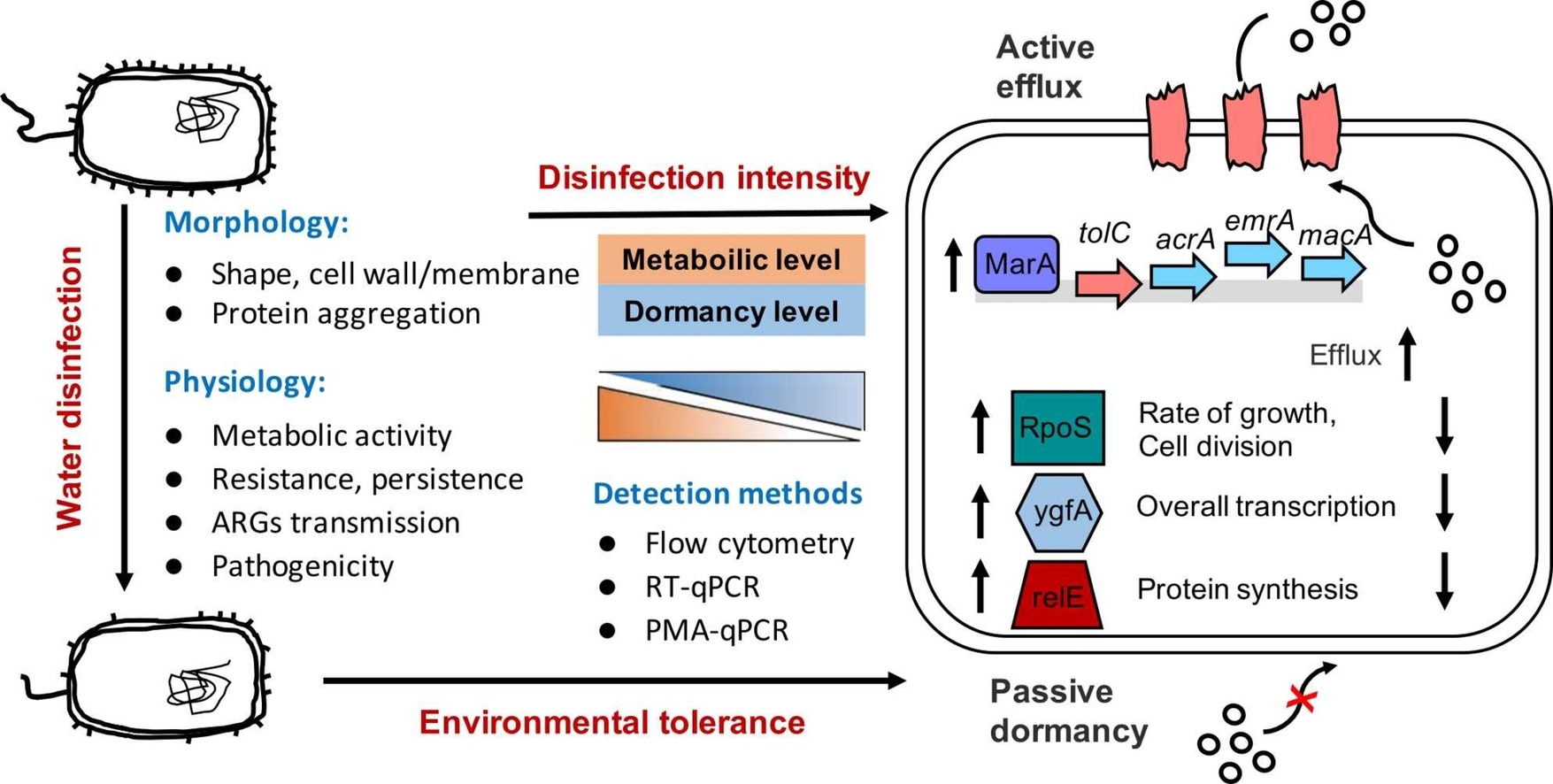Chengsong Ye, Chenlan Chen, Ranwen Ou, Mingbao Feng, Xin Yu*
Journal of Hazardous Materials
https://doi.org/10.1016/j.jhazmat.2023.132666
Published: 5 January 2024
Abstract
Disinfection is essential for the control of waterborne pathogens (WPs), especially during the COVID-19 pandemic. WP can enter the viable but non-culturable (VBNC) state to evade disinfection, seriously threatening water safety. VBNC WPs should be considered as an emerging contaminant to ensure a higher level of safety of the water environment. Here, this study systematically reviewed the water disinfection methods that could induce WPs into the VBNC state, and clarified the risks of different species of VBNC WPs in the relevant water environment. The physicochemical and physiological properties of VBNC cells (e.g., morphology, physiology, and resuscitation potential) were then evaluated to better understand their potential health risks. In addition, the dominant detection methods of VBNC WPs were discussed, and real-time and label-free technologies were recommended for the study of VBNC WPs in the aquatic environment. The possible mechanisms of formation and persistence at the genetic level were highlighted. It concluded that the VBNC state has a deeper level of dormancy than the persistent state, which is associated with the general stress response and stringent response systems, and its persistence is also associated with the active efflux of harmful substances. Finally, the current shortcomings and research perspectives of VBNC bacteria were summarized. This review provides new insights into the characteristics, detection methods, persistence mechanisms, and potential health risks of VBNC WPs induced by water disinfection processes, and also serves as a basis for microbial risk control in the aquatic environment.
